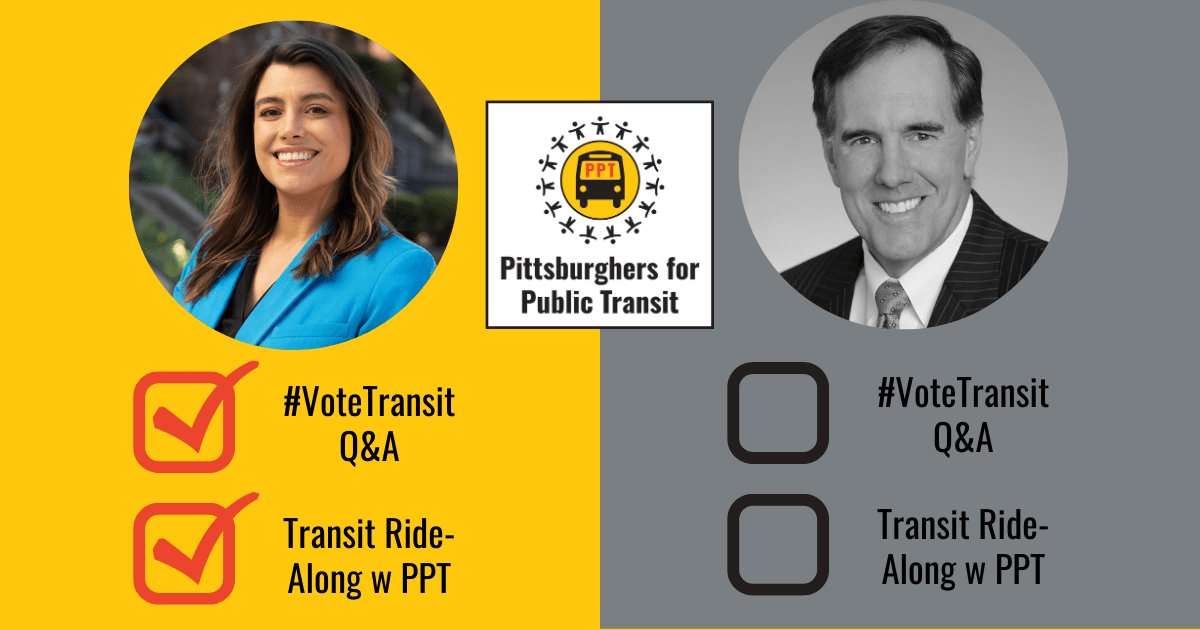 Image Description: Graphic shows photo of Sara Innamorato and photo of Joe Rockey. There are check boxes below each candidate’s image that say “#VoteTransit Q&A” and “Transit Ride-Along w PPT”. Sara Innamorato’s boxes have check...
Image Description: Graphic shows photo of Sara Innamorato and photo of Joe Rockey. There are check boxes below each candidate’s image that say “#VoteTransit Q&A” and “Transit Ride-Along w PPT”. Sara Innamorato’s boxes have check...
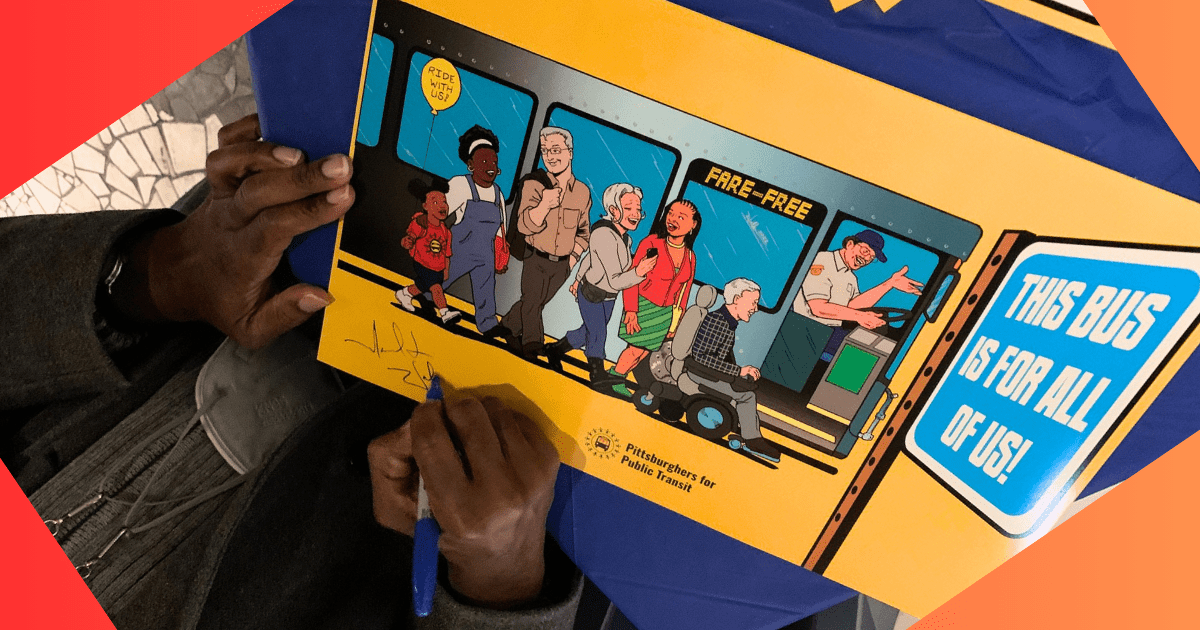 image description: PPT Members hold up PPT Member and Artist Marcel Lamont Walker’s artwork that he created for our 2023 Strategic Plan. Are you an artist in the Pittsburgh region who is passionate about Transit Justice? Have you been looking for a way to share...
image description: PPT Members hold up PPT Member and Artist Marcel Lamont Walker’s artwork that he created for our 2023 Strategic Plan. Are you an artist in the Pittsburgh region who is passionate about Transit Justice? Have you been looking for a way to share...
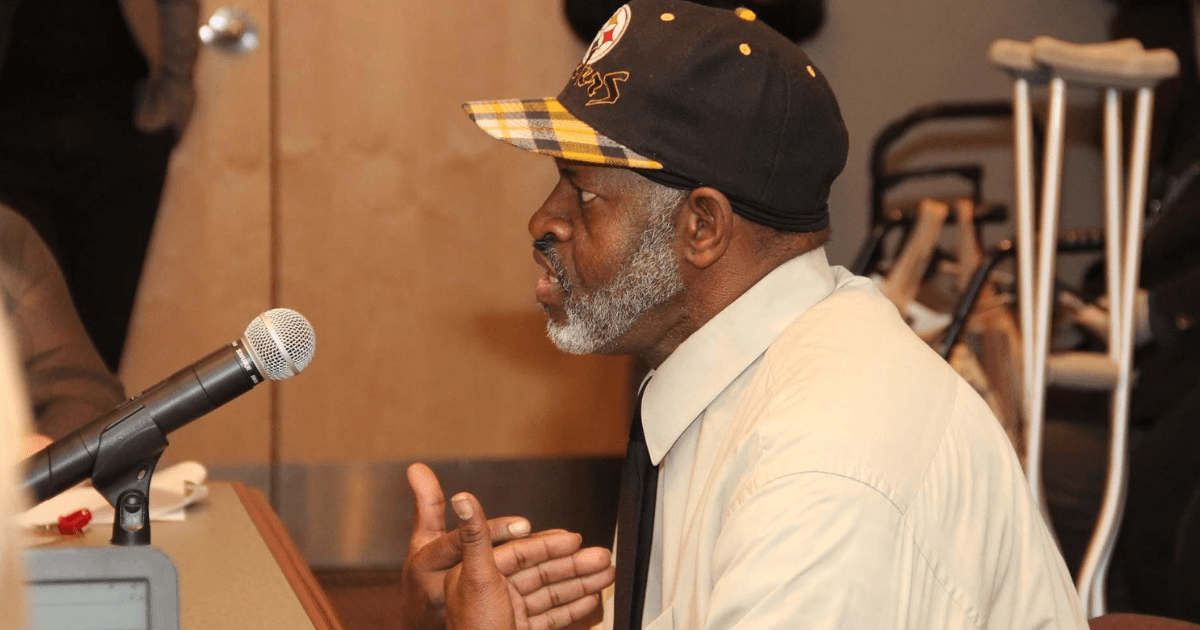 image description: A rider addresses the PRT Board to give feedback on a previous BRT Service Plan Riders are speaking out! Changes to the 61s, 71s and other routes have caused worse access. RSVP to join us and testify to the PRT board. BRT improvements should...
image description: A rider addresses the PRT Board to give feedback on a previous BRT Service Plan Riders are speaking out! Changes to the 61s, 71s and other routes have caused worse access. RSVP to join us and testify to the PRT board. BRT improvements should...
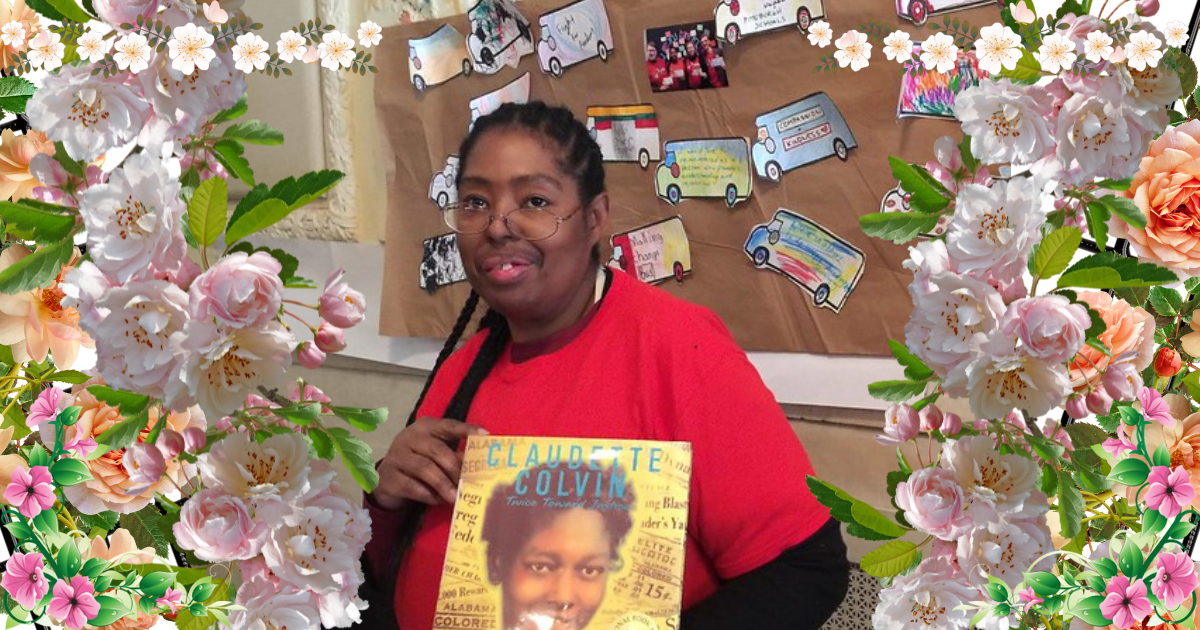 image description: photo of Ms Lisa Gonzalez holding a book about Claudette Colvin. Ms. Lisa was a long-time Board Member who led Pittsburghers for Public Transit’s campaign for transit justice. Her passing is a heartbreak for all in the movement. Please take a...
image description: photo of Ms Lisa Gonzalez holding a book about Claudette Colvin. Ms. Lisa was a long-time Board Member who led Pittsburghers for Public Transit’s campaign for transit justice. Her passing is a heartbreak for all in the movement. Please take a...
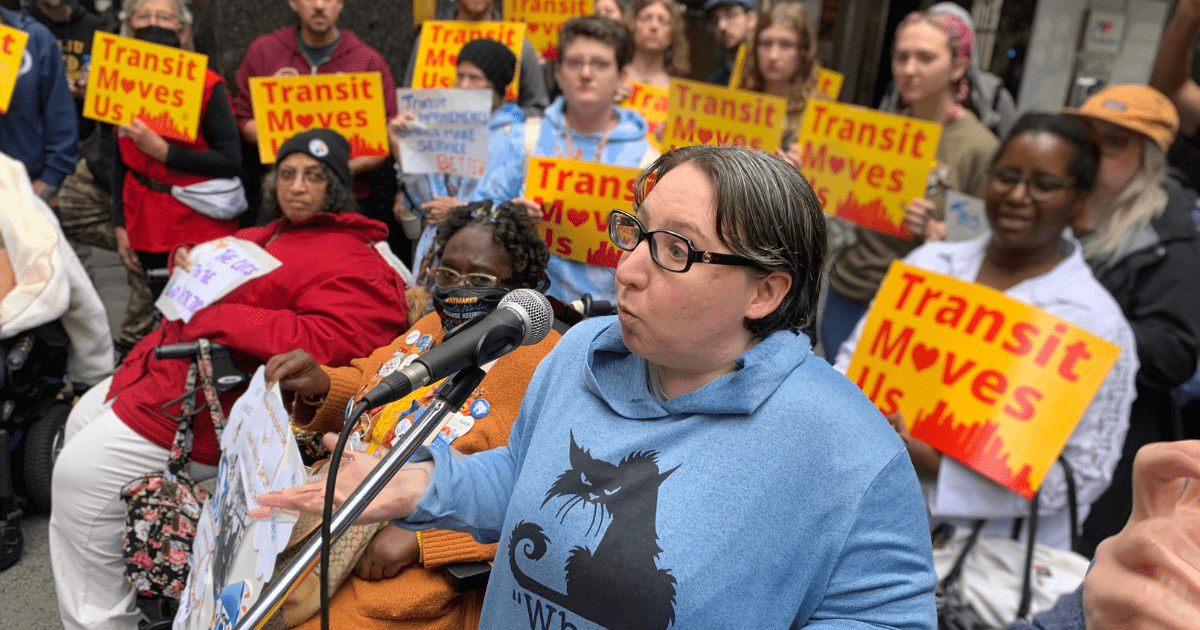 image description: Duquesne worker Kathleen Lynch speaks at the 9/29 rally calling for a BRT system that makes more access, not less. She’s surrounded by PPT Members who hold yellow signs with red text that reads “Transit Moves Us”. Riders TURNED OUT...
image description: Duquesne worker Kathleen Lynch speaks at the 9/29 rally calling for a BRT system that makes more access, not less. She’s surrounded by PPT Members who hold yellow signs with red text that reads “Transit Moves Us”. Riders TURNED OUT...





